Changing your turntable mat or platter material is one of the easiest and most affordable upgrades you can make. But not all turntable mats are created equal; some mats offer a quick and appealing aesthetic upgrade to your setup, while other designs can significantly affect the sound quality.
There are many turntable platter mats available on the market, each with their own unique performance and sonic characteristics. To help you see the wood from the trees, we’ve broken each of them down. Where possible, we’ve explained the pros and cons of each option.
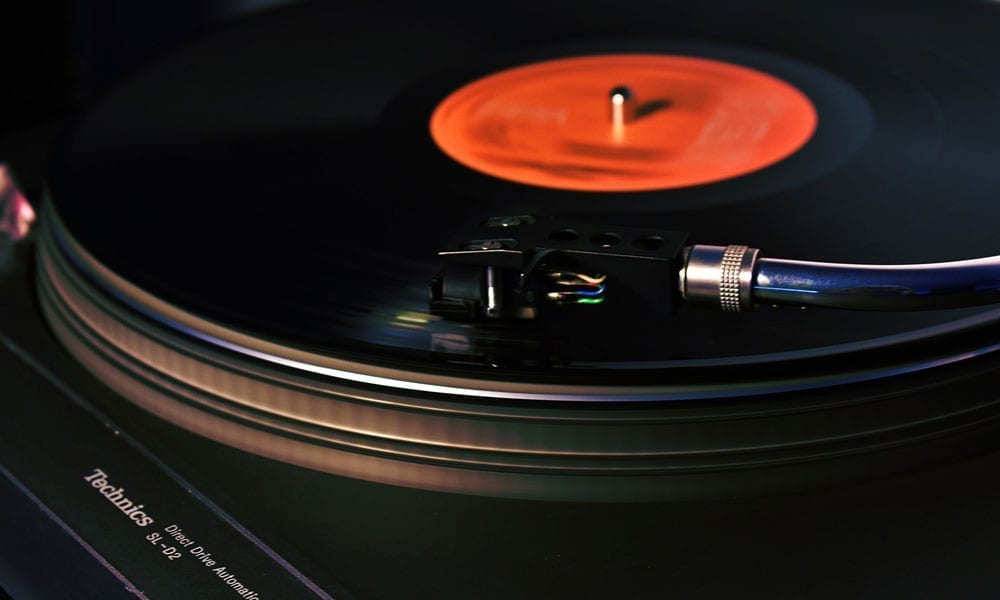
What are the different turntable mat options?
Felt Slip Mat
Many turntables ship with thin, felt platter mats as standard. On the one hand, they offer a safe, soft surface to protect against scuffs and scratches, but on the other hand, felt mats are a magnet for dust, lint, and static. Your records will regularly cling to the mat, which in turn increases the risk of damage. Quite honestly, if you’re still using the stock felt mat, it might be worth considering an upgrade in the not-too-distant future.
Pros: soft-surface; low friction (good for DJs).
Cons: attracts dust and static; low dampening ability; will not control stylus vibration.
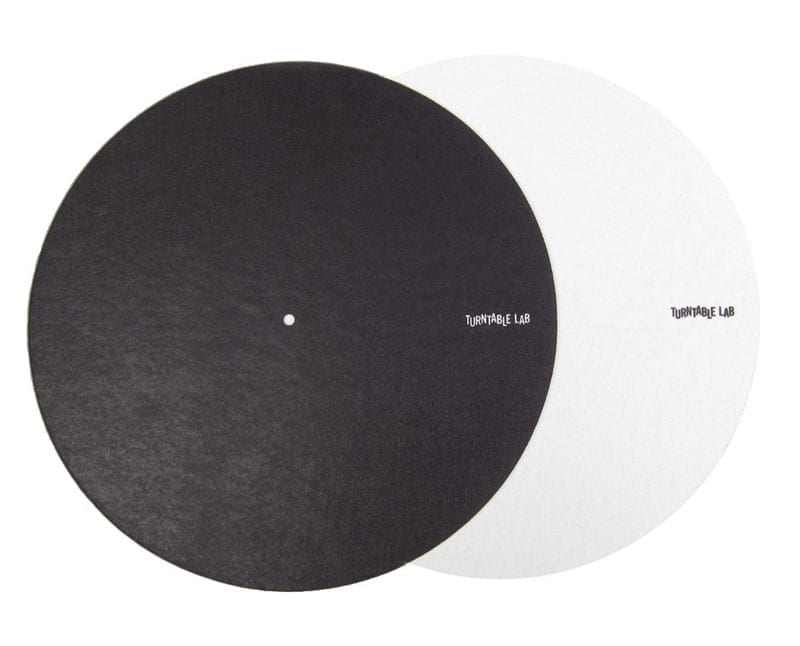
Cork Mat
I like cork; it’s an attractive material and offers some significant improvements on the stock felt mats shipped with many turntables. Cork is an inexpensive upgrade that improves the sound quality significantly by reducing resonance and improving contact. The result is a tighter, more focused sound. Additionally, cork mats are less prone to static. New, highly-creative companies, such as Full Force Hi-Fi, have really taken the cork material and run with it to create some beautiful, unique finishes, from old-fashioned plain designs to intricate marble textures. (Best enjoyed with a clear or translucent vinyl pressing).
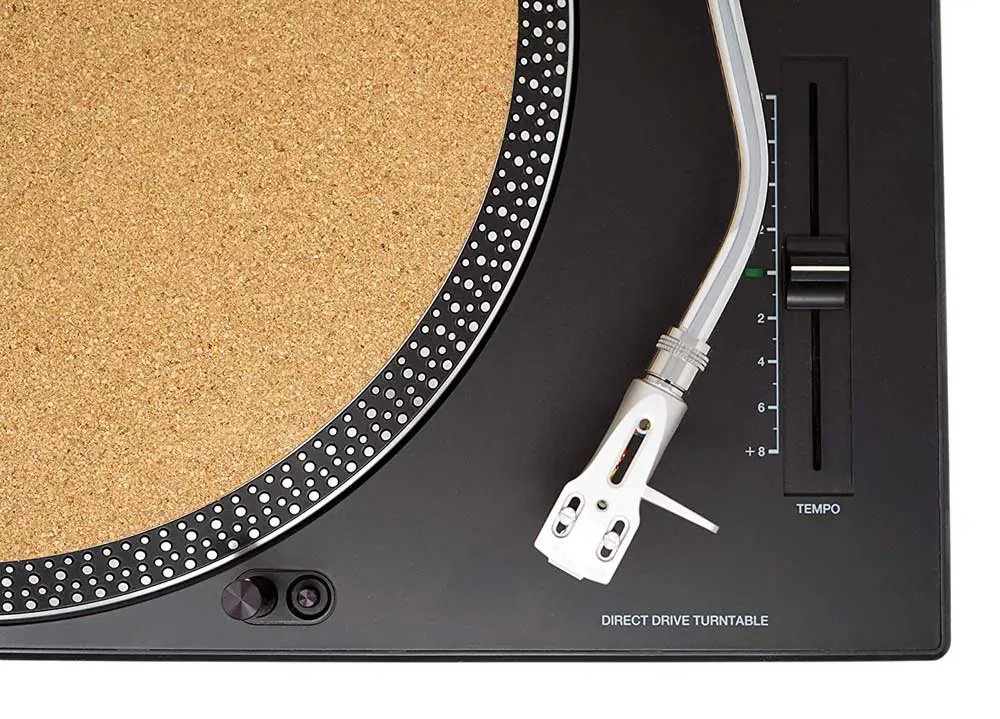
Pros: Good static control; some resonance control; solid surface; unique sound character; attractive aesthetic.
Cons: Will not control stylus vibration.
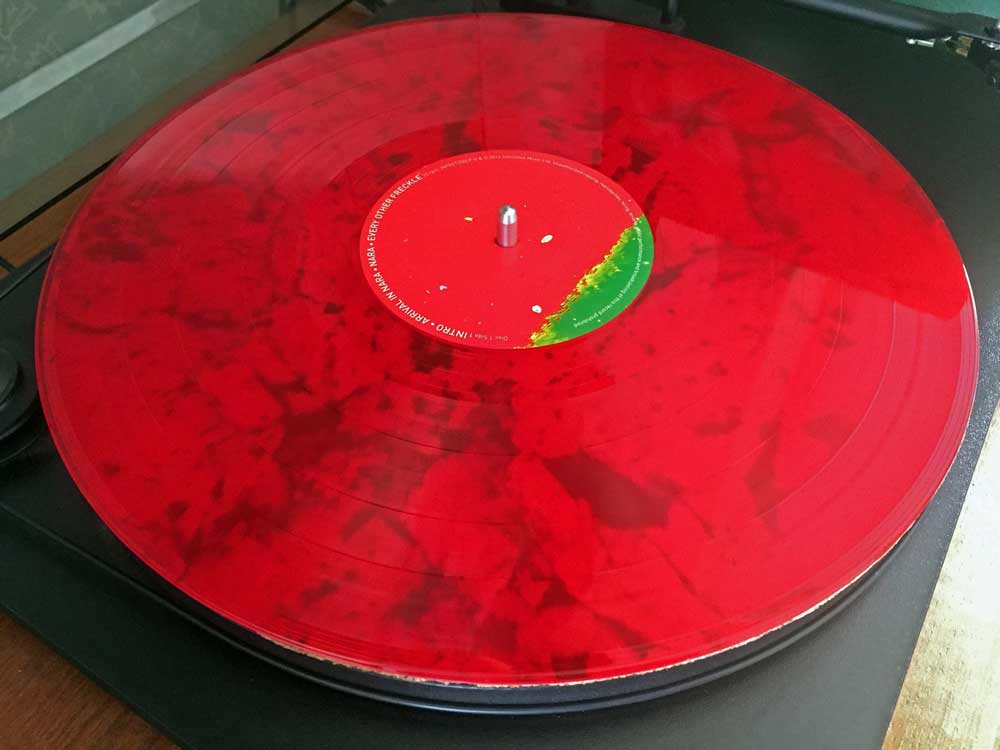
Leather Mat
Leather is another nice upgrade from felt that is cost-effective and aesthetically pleasing. It has mild dampening qualities, and some people claim to hear a subtle uplift in bass response. Similarly to cork, you can really get creative with leather as this beautiful natural material comes in a wide variety of finishes and styles. Leather definitely adds a touch of class to any vinyl addicts deck.
Pros: Good static control; smooth surface; unique sound character; attractive aesthetic.
Cons: Will not control stylus vibration; limited resonance control.
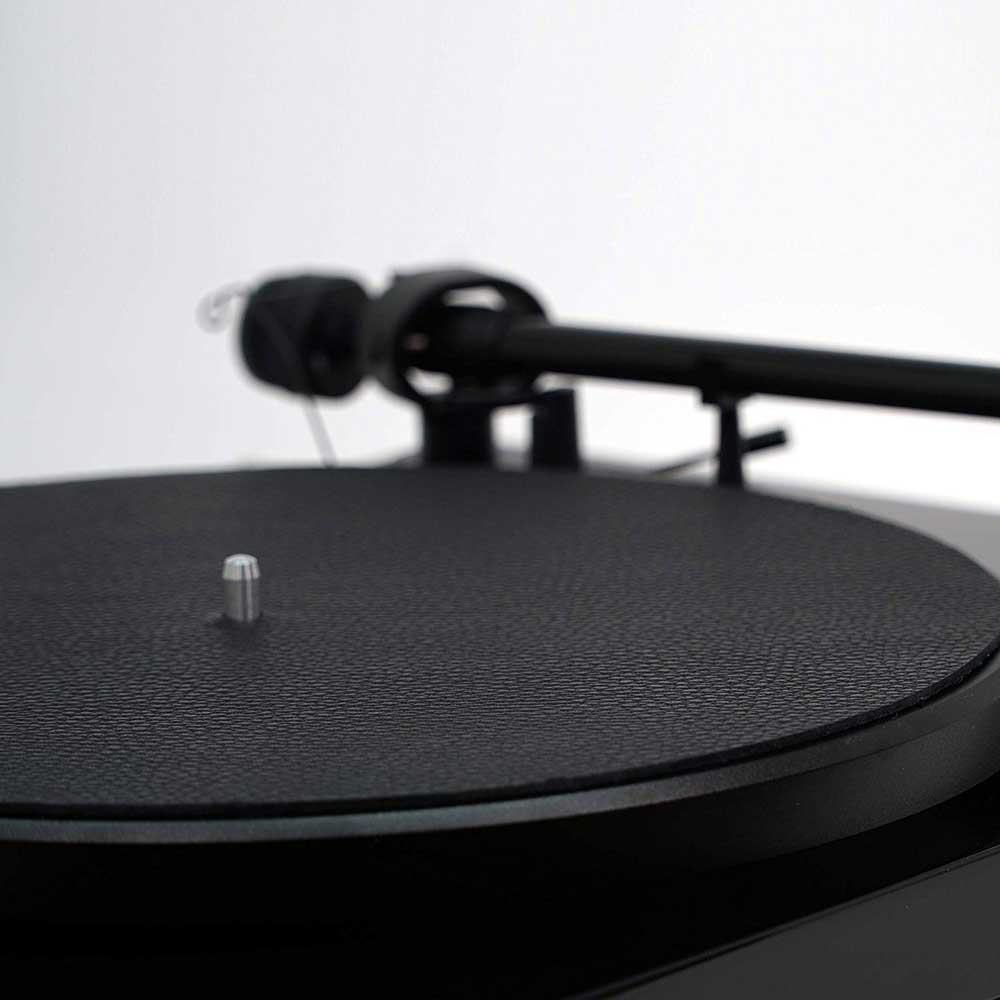
Rubber Mat
Rubber mats are said to isolate the record very well from vibration interference, but opinion varies on the pros and cons of this material. It does offer superb grip and durability, with plenty of listeners reporting a deeper, warmer sound. Diversely, some audiophiles feel that rubber over-isolates the record. The theory is, thick rubber has low conductivity, which leaves the static on the record surface. The result is an increase in audible static. Personally, I prefer cork over rubber.
Pros: Reduces vibration interference; excellent grip and durability; deep warm sound (if that’s your thing).
Cons: Could over-isolate the record; may increase audible static.

Acrylic (Direct to Platter – No Mat Required)
Acrylic is regarded by many as one of the best options for turntable platters as the material is virtually the same as a vinyl record. When you place a record directly onto the acrylic surface (without a slip mat), the record is effectively “coupled” with the playing surface. This makes acrylic far better at controlling resonance generated by the stylus scrubbing in the record groove than traditional felt, cork, or leather mats. In turn, this results in better performance and sound quality. The chance of mistracking caused by movement between the mat and platter is also eradicated.
Pros: Excellent static and resonance control; Excellent record contact (flat and even); controls stylus vibration; unique sound characteristics.
Cons: Harder surface than traditional slipmats.
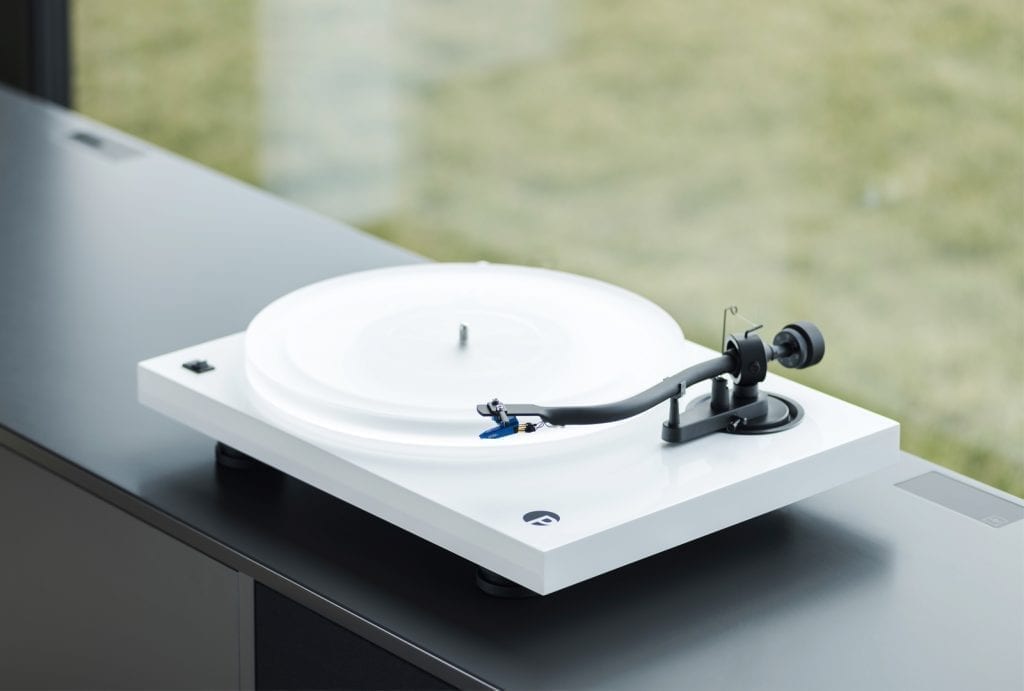
Sound Damped Steel
Metal platters are infamous for resonance issues, so placing your record onto a metal mat may seem slightly incongruous. Sound Damped Steel (SDS), on the other hand, is different. In this case, two plates of metal (steel and aluminum) are bonded together with a polymer. When the metal plates receive vibrations, they work on stretching and contracting the polymer, which turns the vibration energy into heat.
I own one of these; I like it. You can read our full review here. (Small double-sided sticky pads are recommended to prevent slippage between the platter and SDS mat).
Pros: Excellent static and resonance control; Excellent record contact (flat and even); actively absorbs stylus vibration; superb sound.
Cons: May need light adhesive pads to prevent slipping.
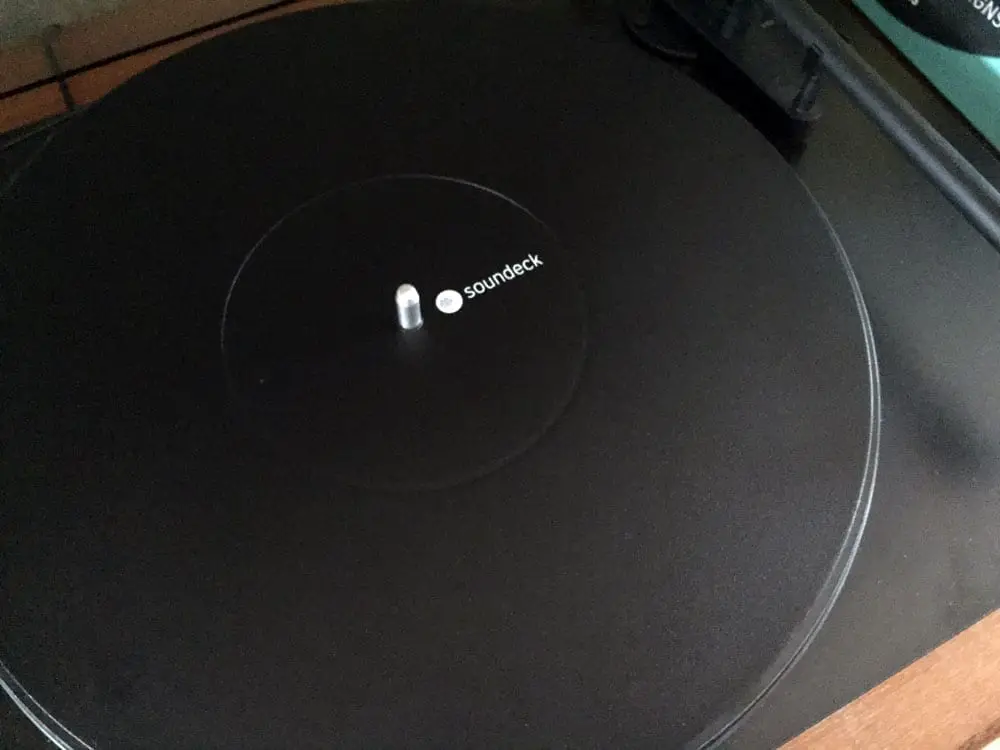
Achromat
The Achromat is a further development on the acrylic platter concept by the inventor of the acrylic platter himself, Arthur Khoubesserian (Owner of The Funk Firm). The Achromat claims to perfectly impedance match a vinyl record, which in simple terms means that the mat surface has similar if not the same characteristics as the record. When the material is very different (say felt, or even cork) the vibration energy released during playback cannot easily transfer from the record surface to the mat, and therefore, it cannot defuse and may end up being processed by the cartridge. Achromat combines impedance matching with a complex internal construction of microscopic tunnels where vibration energy is rapidly diffused into tiny amounts of heat energy — seriously clever stuff. You can read our full review of this unique turntable mat, here.
Pros: Excellent static and resonance control; excellent record contact (flat and even); actively absorbs stylus vibration; superb sound.
Cons: May need light adhesive pads to prevent slipping; will almost certainly require you to adjust your turntable VTA (unless you buy the thinner 3mm version).
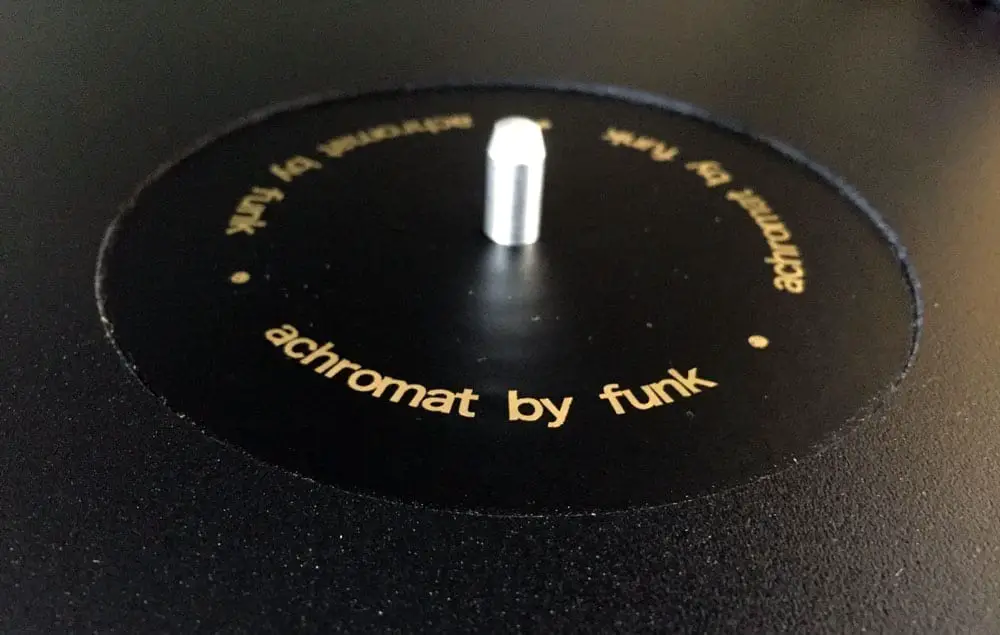
The Bottom Line
Selecting the best platter mat for your turntable is a little like choosing a set of tires for your car; the right choice for you very much depends on a wide range of circumstances and personal taste. The material you choose will have a direct impact on turntable resonance and sonic performance. Each type can highlight some frequencies and suppress others—which one you prefer the sound of is down to personal taste.
Subjective though sound quality may be, there are some, more objective performance factors that you may want to consider. For example, a felt, leather, or cork mat clearly only goes so far in attempting to dampen resonance. They are highly cost-effect, but they lack the ability to control stylus-generated resonance in the same way as higher-end options that impedance match to the record. (In other words, the record and platter surface material are similar—if not the same—in characteristics).
Another factor you should consider is the thickness of your new mat. If the record mat is significantly thicker than your previous product, then you will need to adjust the vertical tracking angle (VTA) of your tonearm. On some turntables, this setting is not user-adjustable (and that includes many REGA and Pro-Ject models at the beginner to intermediate level.
Lastly, it’s good to keep these things in perspective. Although a change of mat can have a significant impact on performance and sound, it is not the be-all and end-all. We’re talking about optimization here, not revolution. Use your ears, make a practical decision, and remember—if it sounds good, it is good.
Got a question or opinion about platter mats? Drop us a note in the comments section below. Happy listening.
Post contains affiliate links to products. These cost you nothing but help to keep this website free.

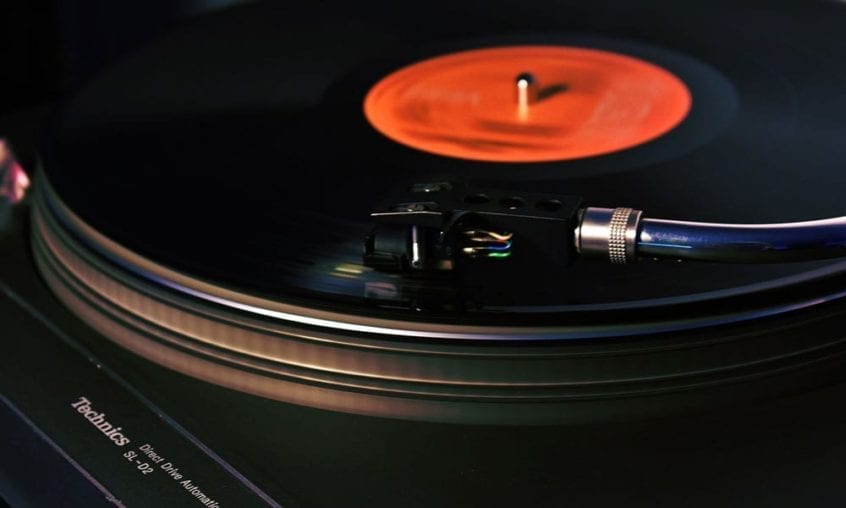


Just bought a cork mat that is thinner than the rubber 1 that my tt came with. Question is. Do I place the new 1 directly onto the platter or is it best to place it on top if the existing 1?
Hey Mike. In most cases I would advise not placing two mats on top of each other. What is the main platter made from? And how much thinner are we talking here?
If the height changes a lot, it may be advisable to adjust the VTA of your tonearm, but it depends on how much different we’re talking.
Yes go ahead with the thicker leather option because the experience is well noticable also!!! Also not to give away anything but maybe there’s some kind of something that has memory instilled deep into the grooves or something because I think the records may have over time issues buried in the soul of the sound that it just can’t change no matter what mat you slip down or off, maybe it’s just the record. Being under a spell can blnd a person to what’s truly the better sound quality but it’s a personal opinion and what good is mine that matters I’d it needs a consideration
I have a 10-15 yr old Pro-JectDebut III with its original felt mat. I use a Record Doctor clamp, which I tighten a bit, just to prevent record from slipping. Two questions. First, if I am interested in a tighter sound with better high frequency response am I better off not tightening the clamp or tightening it as I do.
Secondly, what mat material will provide the brightest, tightest, most precise sound! FYI. The turntable has a steel platter.
Very informative article, I presently have a felt mat on my new turntable. Though sound isolation is important I added a damping iso pad under my table. It did improve the sound but there is still a slight resonance heard through the speakers. Classical music is very noticeable between lower transitions. I should mention my turntable has a glass platter and is an automatic belt driven. I guess my comment is I find felt works for me, I’m currently searching to perfect lower static feedback and I may switch to a rubber mat. Then there’s weights to improve sound. Its endless and maddening to achieve the best sound.
I have used Rubber, Felt and cork. My current turntable is a Clearaudio. It has no mat. Best sound I have ever had. Has no attached dust cover either. I believe both cover attached (open or shut) and mat muffle sound.
As several of the other commentors, I am back to the vinyl-world after decades of CDs. On my brand new SL-1200GR I am facing some problems with static, and figure that changing the mat may help me. From your very helpful walk-through of the various mat materials, I am closing in on cork. However, since I in the 80s were poor as a student (which I was), a lot of the hi-end hi-fi terms for issues and problems were simply ignored, so I’m a bit uncertain what some of the issues you described really mean.
In particular, when it comes to cork mats, you write “Will not control stylus vibration”. What is the practical effect of that? Or, more precisely: How will I hear stylus vibration?
Stylus vibration can wear the record and stylus. For detailed information on stylus life https://thevinylpress.com/the-finish-line-for-your-phonograph-stylus/
I’m a big vinyl collector and all my technical devices are from Technics, as well my turntable which is SL 1210 MKII. At present, my pickup has a felt mat, but I would like to change it due to high static charges on the records. Which would be your recommendation for this type of turntable as an upgrade ?
Many thanks for your answer.
[…] Each mat design and the material will have a direct impact on the sound of your vinyl records. After all, with vinyl, we are dealing with a mechanical process that happens at a microscopic level; the smallest change in material or design can have a significant impact. […]
[…] Better still, if your turntable manufacturer provides the option to upgrade your platter for an acrylic model, this will allow you to place the record directly onto the platter, thus eliminating the need for a mat altogether. Whichever surface you choose for your platter or mat, they all have pros and cons – you can read more about this topic, here. […]
Just getting back into vinyl after a 20-25 year absence. My old turntable didn’t survive several moves, but my albums did. I bought a Pro-Ject Debut Carbon DC at a good price and was thinking of changing the mat or getting their acrylic platter. This might be a dumb question, but common practice way back when was the TT didn’t get turned off when changing/flipping records. Is that still the case now, especially with all these different mat materials? Or should the TT always be turned off when changing/flipping lp’s?
Hey Mike. Thanks for your question, and welcome back to the hobby! It’s best to stop the platter from spinning before changing sides or records as the chances of damaging your records will be greatly reduced. Hope this helps.
But you shouldn’t have to turn off your TT…platters usually stop when in tone arm cradle.
[…] the mat can improve sound quality. The right one can absorb vibrations and offer better protection for your […]
[…] How Do Different Turntable Mats Affect Sound Quality and Performance?https://www.yoursoundmatters.com/how-do-different-turntable-mats-affect-sound-quality-and-performanc… […]
[…] you need to take some extra precautions to keep those vinyl isolated. Consider investing in a rubber mat to dampen vibrations. Also, make sure that your turntable is in an area where it’s safe from […]
[…] How Do Different Turntable Mats Affect Sound Quality and Performance?https://www.yoursoundmatters.com/how-do-different-turntable-mats-affect-sound-quality-and-performanc… […]
Great article Marc. Thanks for breaking things down simply. Wasn’t aware of Funk Firm Achromat – now looking at 3mm as I don’t have adjustable vertical adjustment.
That’s great. I’m glad you found it helpful, Andy. I’m a fan of the Funk-Firm Achromat for sure. The thicker version is ideal, but definately best to go 3mm if you can’t adjust VTA. Enjoy!
Louis here.Where can one purchase a cork or Achromat 3mm without being ripped off in cape town,or accrylic……please
Saw a Youtube video actually showing a felt mat causing less amount of static than cork and rubber…what say you?
I’d say, interesting – pop over a link and I’ll take a look. In any case, a felt mat isn’t easy to brush dust off. Also, neither are as good as acrylic or similar for static control.